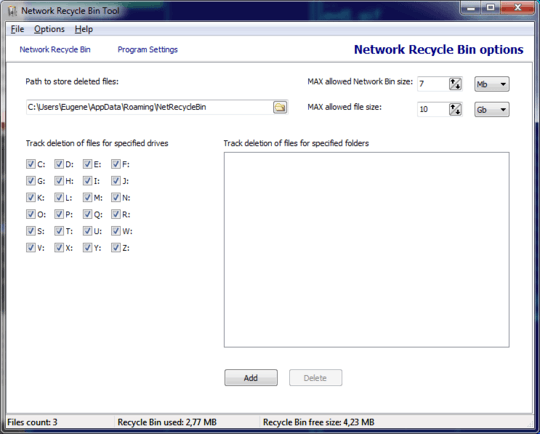22
6
From a Windows workstation when I delete files over the network (e.g. a file share, server disk, etc) those files are never put into a trash can, either on my Windows workstation or on the server - they're instantly and permanently deleted. This has always sucked IMHO.
Is there a software that, in this scenario, puts the files into a trash can somewhere for easy undelete?
Maybe a Windows policy change, registry setting value, software utility, etc ?
--
Looking for a specific solution instead of general "Hey look into this, or try this". I'm convinced somebody has already solved this and can explain it. Thanks.

Since the files aren't on your drive they would have to be copied to your local drive then placed in the recycle bin. This is very time consuming and would be a waste of network traffic (in most cases) so what Windows does is it just tells the remote networked system that it shoudl delete that file itself. – Daisetsu – 2010-07-15T23:45:53.290